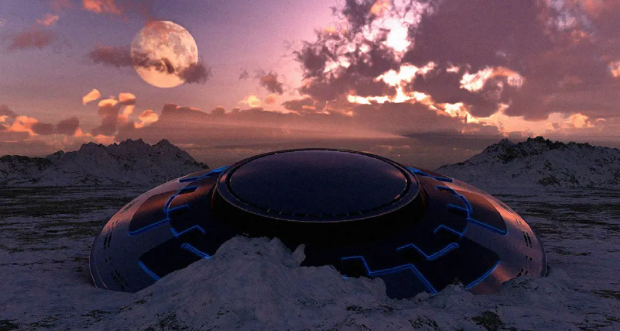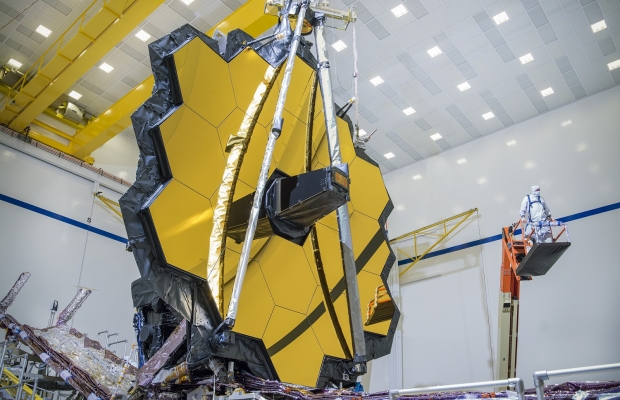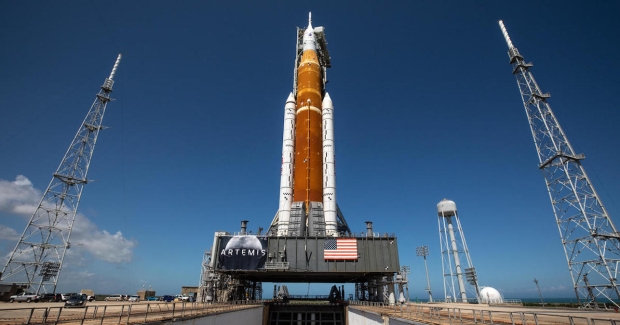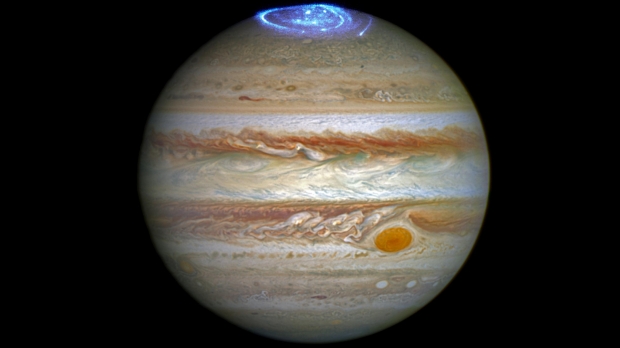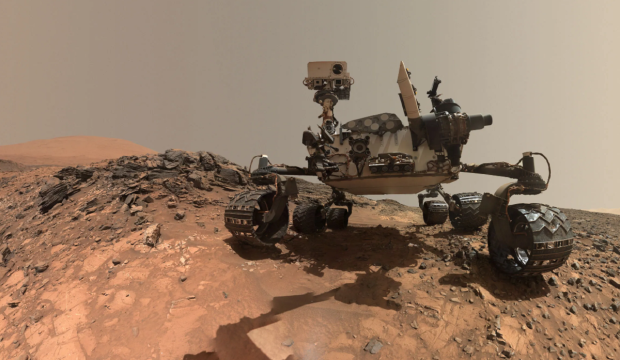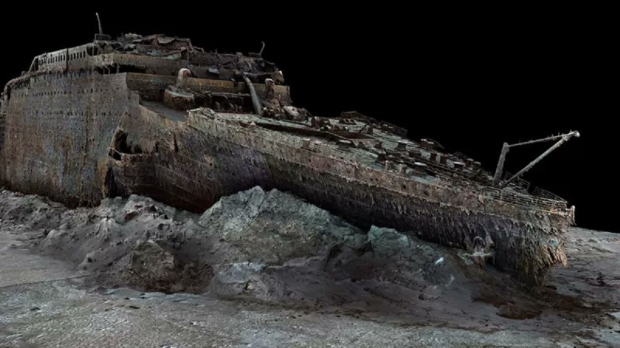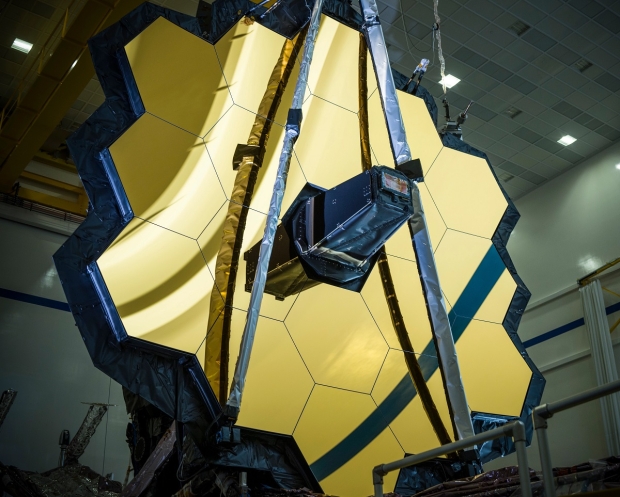Science, Space, Health & Robotics News - Page 51
Government whistleblower says US has recovered a 'non-human' spacecraft with alien 'pilots'
A new report by The Debrief has cited a former intelligence official claiming that he's provided Congress with information on a downed "non-human" spacecraft that contained dead "pilots."
Firstly, it should be noted that none of the following information has been confirmed by the US government or any other regulatory body, and are direct claims from the whistleblower/s. The whistleblower's name is David Grusch, an Air Force veteran and former member of the National Geospatial-Intelligence Agency, who claims the information he provided Congress is "proof" of the recovery of objects of "exotic origin (non-human intelligence, whether extraterrestrial or unknown origin)."
The descriptions of these objects were based on vehicle morphologies and material science testing, which included atomic arrangements and radiological signatures. Grusch explained that the recovered material "includes intact and partially intact vehicles. These are retrieving non-human origin technical vehicles, call it spacecraft if you will, non-human exotic origin vehicles that have either landed or crashed."
NASA's Webb peers into the heart of distant galaxy revealing its secrets
NASA's James Webb Space Telescope (JWST) continues to shock scientists and astronomers with the incredible science the observatory can conduct from its vantage point of 1 million miles away from Earth at what is called the second Lagrange point.
NASA intentionally sent Webb to Lagrange Point 2 for a few different coinciding reasons. This position in space enables Webb to stay in line with Earth as it orbits the Sun while also giving it the ability to see further into space than any other telescope. Since arriving at its destination, Webb has been conducting cutting-edge science, and according to a newly released image on the European Space Agency (ESA) website, Webb isn't by any means slowing down its scientific escapade as it has recently imaged a barred spiral galaxy dubbed NGC 5068.
The ESA explains on its website that Webb's image showcases the bright long tendrils of gas and stars of NGC 5068, which is located approximately 17 million light years away from Earth within the constellation Virgo. To give a perspective of just how big 17 million light-years is, the Milky Way's neighborhood of galaxies is called the Local Group and is approximately 5 million light-years away, which puts NGC 5068 well out of our galactic neighborhood.
NASA expects it'll spend $6 billion on a rocket that's six years behind schedule
NASA's Inspector General has released a new audit on NASA's management of the Space Launch System rocket, which is slated to be the transportation astronauts will take to the Moon.
The audit states that NASA will spend as much as $93 billion on the Artemis Moon Program by the end of 2025, with $22 billion being spent just in 2022 on the development of the Space Launch System (SLS) rocket. Notably, the audit states that mounting costs can be attributed to development hurdles and missteps, resulting in the SLS rocket being behind schedule by six years. Furthermore, NASA's audit states that the space agency expects these costs to increase as well as the SLS schedule.
The development of the SLS rocket has already pushed NASA's budget for its Artemis Moon Program over by $6 billion, and according to the audit, these schedule delays and mounting costs can be traced back to poor assumptions of reusing salvaged engines from Space Shuttle launches. More specifically, the SLS rocket uses four RS-25 engines for every launch, which are either destroyed or abandoned entirely after launch.
Scientists say they've found Bible chapter hidden for more than 1,500 years
Scientists using ultraviolet photography have made an intriguing discovery in the field of biblical studies.
They have found an ancient version of a chapter from the Bible that had been hidden beneath another section of text for over 1,500 years. Historian Grigory Kessel from the Austrian Academy of Sciences unveiled this groundbreaking finding in an article published in the prestigious journal New Testament Studies.
According to Kessel, "The manuscript offers a 'unique gateway' for researchers to understand the earliest phases of the Bible's textual evolution. It shows some differences from modern translations of the text." Kessel used ultraviolet photography to reveal the earlier text concealed beneath three layers of words on a palimpsest, an ancient manuscript that was often reused.
NASA releases breathtaking pictures of Jupiter's most volcanic moon
NASA's JunoCam spacecraft has traveled 510 million miles around Jupiter and its moons, documenting as much as possible and relaying valuable scientific images back to Earth.
NASA's Juno spacecraft has completed its 51st close flyby of Jupiter, capturing breathtaking images of the gas giant's volcanic moon, Io. The flyby on May 16 brought Juno closer to Io than ever before, at a distance of approximately 22,060 miles (35,500 kilometers). The detailed images captured by Juno's visible light imager JunoCam reveal Io's scarred, red-hued surface, showcasing the moon's intense volcanic activity.
An infrared view obtained by Juno's Jovian InfraRed Auroral Mapper (JIRAM) prior to the flyby reveals multiple hotspots of volcanic activity across Io's surface. Io, slightly larger than Earth's moon, is known as the most volcanically active world in the solar system. It hosts hundreds of actively erupting volcanoes, blasting lava dozens of miles into its thin, water-less atmosphere.
Continue reading: NASA releases breathtaking pictures of Jupiter's most volcanic moon (full post)
Scientists announce the chances of Earth being struck by a deadly asteroid
Astronomers have looked at large swaths of asteroid data collected by NASA and found the likelihood of Earth being hit by a large asteroid over the next 1,000 years.
Astronomers concluded in a recent study, which was published in The Astronomical Journal, Earth is unlikely to be struck by large asteroids for at least the next 1,000 years. While this brings a sense of relief, it's important to note that the study focused on asteroids larger than 0.6 miles (1 kilometer) and does not eliminate the possibility of smaller yet still hazardous asteroids impacting our planet.
The research team, led by scientists from NASA's Jet Propulsion Laboratory, analyzed the positions and orbits of known near-Earth objects (NEOs) cataloged by the NASA-funded Minor Planet Center. Their goal was to assess the risk of asteroid impacts over an extended time frame compared to previous analyses.
Astronomers discover radioactive heat source coming from inside Mars
A team of researchers is one step closer to understanding the geological mysteries surrounding the evolution of the Red Planet.
A new paper published in the scientific journal Geophysical Research Letters outlines an analysis of data obtained by NASA's InSight lander. The team looked at the InSight lander's data when it recorded the strongest Marsquake throughout its mission. This Marsquake was so severe that it bounced around the planet three times, giving researchers a lot of interesting data to work with. From that data, scientists were able to determine the thickness of Mars' crust, with current estimations putting it anywhere between 26 and 35 miles thick.
Doyeon Kim, a seismologist at the Institute of Geophysics at ETH Zurich and lead author of the paper, said that Mars' crust is much thicker than Earth's and that the team was also able to find the density of Mars' crust. According to the paper's results, the team was able to prove the density of the crust in the northern Martian lowlands and the southern highlands were similar, putting to bed a long-standing debate in the scientific community about the origin and structure of Martian crust.
Continue reading: Astronomers discover radioactive heat source coming from inside Mars (full post)
First full-sized 3D scan of Titanic shows it without water in stunning detail
Titanic, the world's most famous shipwreck, which lies at approximately 12,500 feet below the surface of the Atlantic, has now been scanned in 3D for the first time.
The luxury cruise liner sank to the bottom of the ocean in 1912 after colliding with an iceberg, taking 1,500 lives as it sunk and starting one of the most interesting shipwreck stories ever. Despite how long it has been since the Titanic sank, many questions still need answering.
Parks Stephenson, executive director of the USS Kidd Veterans Museum and Titanic analyst, said to the BBC, "There are still questions, basic questions, that need to be answered about the ship," and this new 3D model is "one of the first major steps to driving the Titanic story towards evidence-based research - and not speculation."
NASA's Webb telescope photographs cosmic monsters lurking in deep space
NASA's James Webb Space Telescope has eyed large groups of young stars grouped together in a spherical shape and found a monstrous star lurking in the background.
These groupings of young stars are called globular clusters and can contain millions of stars born around the same time. Evidence of globular clusters births go back as much as 440 million years after the Big Bang, and despite being born in relatively close proximity to each other, stars within globular clusters have a composition that is confusingly diverse. Astronomers are still attempting to explain why stars born in a globular cluster have varying levels of sodium, aluminum, oxygen, and many other elements.
One theory that has been suggested by astronomers is undiscovered supermassive stars are polluting these infant stars with chemical elements. Now, Webb's incredible observations have given that theory some credit, as astronomers have announced in a new report that Webb has provided the very first evidence of supermassive stars lurking within globular clusters. So, what's a supermassive star?
Astronomers discover Saturn has many more moons than they originally thought
It was only a few months ago that the title for the planet with the most moons in the solar system shifted to Jupiter, and now that title may be switching again.
In early February, a team of astronomers discovered that Jupiter has many more moons than was officially recorded, with the team reporting the biggest planet in the solar system having an additional twelve moons. These twelve moons were discovered using telescopes in Hawaii and Chile, and after follow-up observations, their sizes and orbits were determined. The official list was updated by the International Astronomical Union's Minor Planet Center, putting Jupiter at 92 confirmed moons, beating Saturn's 83 confirmed moons.
However, that second-place trophy seems to be going back to Jupiter as astronomers have discovered an astonishing 62 additional moons orbiting Saturn, which would put Saturn at a total count of 145 moons. Currently, these new observations of Saturn's additional moons need to be verified, and if you thought that any of these moons are similar to Earth's moon, you would be wrong. The twelve moons that astronomers found orbiting Jupiter in early February measured between 0.6 miles and 2 miles in diameter.


